Thuja turned black: reasons and methods of struggle
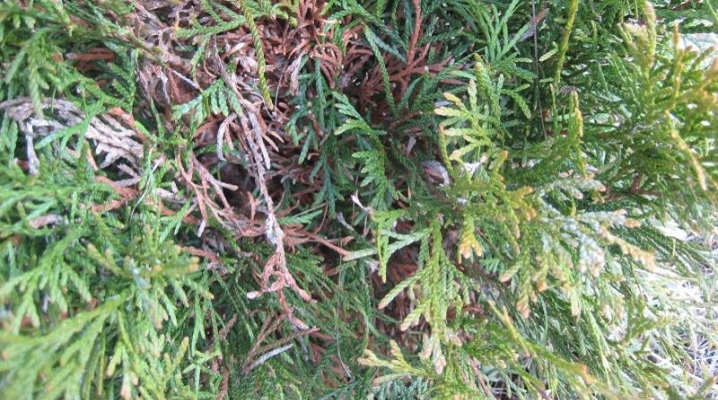
Thuja is a popular evergreen with dark green needles. It exquisitely complements not only the summer landscape of the garden, but also "dilutes" the snow-white landscapes of winter. Unfortunately, like all plants, thuja is prone to damage by pests and diseases. It often happens that thuja needles turn black, and if timely measures are not taken, then the bush can be seriously damaged.
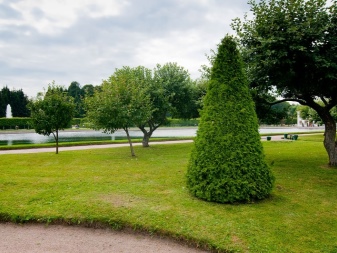
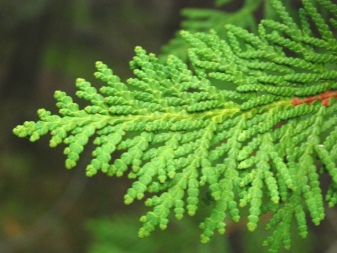
Plant care principles
Thuja belongs to a winter-hardy variety of a perennial plant from the cypress family and has more than 120 plant species, differing in different colors of needles and crown shape. It is very popular both in a single planting and as part of groups of plants, as a hedge, for decorating flower beds, alleys, lawns.
Thuja itself has high frost-resistant qualities and is very unpretentious to care for. However, while it is young and recently planted in open ground, the following measures are necessary for its favorable growth:
- regular watering and loosening of the soil;
- fertilizing with mineral fertilizers in the spring;
- formative and sanitary pruning;
- disease prevention.
Violation of the rules for caring for thuja, excessive stagnation of moisture in the soil can contribute to the development of diseases. The most common fungal diseases of the plant include the following.
- Phytophthora is a putrefactive root fungus, one of the most dangerous diseases. It is manifested by the destruction of the upper layer of the root, the wilting of the plant. Shoots become gray and soft.
- Snow mold (shyute) - appears after snow melts, characterized by a dark gray coating, similar to a cobweb.
- Brown shoots - yellowing of scales and death of shoots.
- The tinder fungus enters the plants through damaged and dry branches, where it grows, while the thuja turns yellow and dries.
- Fusarium - is a lesion of the root and vascular system of thuja. It is characterized by yellowing and reddening of the needles, the crown thins and dries out.
- Blackening of shoots.

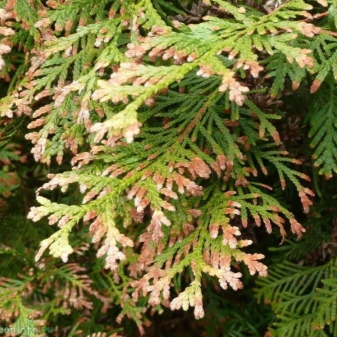
Characteristic features of blackened thuja
Often, with the onset of spring, dark spots are found on the needles of a plant, most of which are located at the bottom of the plant. In most cases, the cause of this phenomenon is animal feces, however, a fungal disease or an excess of fertilizers can also contribute to blackening of thuja.
First of all, the plant should be treated against blackening with an antifungal drug. - even if the infection with the fungus is not confirmed, preventive measures will not interfere. Then you should carefully examine the branches that have deteriorated, and study the localization of the lesion.
Chaotic spots spreading to the lower leaves indicate that the thuja was "marked" by a dog or cat. If the impact on the plant of animal feces continued for a long time, then a larger area of blackening is formed on the branches of the thuja. A large affected area can be detrimental to the thuja as a whole. It depends on the size of the animal, so, for example, a large dog can mark a bush at a higher height than a small one.
Unfortunately, it is quite difficult to eliminate the consequences of the large "scale of the tragedy" damaged shoots of thuja lose their shine, the needles dry out on them, after which they completely crumble... In such cases, the affected areas will no longer be able to recover - in the best case, the tree will lose several branches, in the worst case, the thuja may die.
In the case of a small area of blackening, you can try to wash off the toxic substance from the thuja: to do this, water the branches with water, and then remove the damaged tips of the needles by hand. Perhaps such an event will allow the tree to recover, it is also recommended to additionally treat the shoots with substances that stimulate growth.
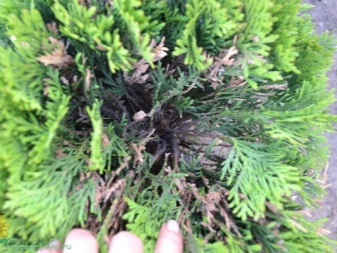
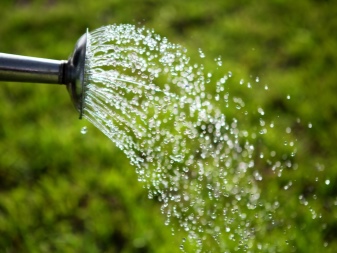
The most common blackened spots on thuja indicate that the plants are suffering from a fungal infection.
A characteristic feature of the disease, in addition to blackened areas, is the presence of fungal spores on the branches, which outwardly resemble black droplets. In this case, the disease does not appear immediately, the needles gradually change color from dark red to bright red, after which it can already become darker.
Some types of fungus can contribute to the damping off of coniferous shoots and the appearance of a white or dark coating on them. A thicker and darker plaque indicates the disease "brown shute", in which fungal fruits can be found on the branches of thuja. It often happens that thuja's needles turn black from an excess of mineral fertilizers, while its trunks look as if they were painted with black paint. This phenomenon is caused by a chemical burn of the plant. It is almost impossible to eliminate the consequences of the "overdose", the only thing that remains to be done is to wait for the thuja to "outgrow" and recover on its own.
As for growing at home, the main prerequisite for the favorable development of a plant is compliance with the level of humidity in the room. Very often, indoor thuja dries up in winter from excessively dry air, while watering may be sufficient. The optimal condition for growing thuja at home is maintaining a temperature of + 6-10 ° C and sufficient lighting. If the thuja has not completely dried up (the branches remain flexible), then you can try to "revive" it by daily spraying with epin.
On spring days, thuyu is placed in the open air (balcony), while shielding from direct sunlight and spraying branches 2 times a day. Compliance with these conditions will help the plant recover and resume growth.

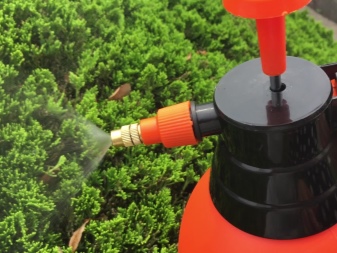
Preventive actions
To ensure favorable conditions for the development of thuja, compliance with the rules of care is not enough, since the adventures of pets to their summer cottage and their regular "irrigation" of plants lead to very sad consequences. Therefore, intruders will have to fight in humane ways with the use of improvised means.
To scare away animals, you can use specialized substances that have a special smell, which should be decomposed near plants, or alternative methods (red hot pepper, turpentine). It is also advisable to install a small fence around the trees to restrict the access of animals, especially for fresh, newly planted plants. Rinsing branches with water is not enough to treat fungal infections. The affected areas should be treated several times with a special antifungal agent (fungicide), re-treatment should be carried out after 2 weeks. It is recommended to remove and destroy the most affected shoots, as they can be a source of infection for other plants.
Unfortunately, not all fungal diseases are treatable (late blight and fusarium), so the only way out is to dig up and destroy the plant, and it is recommended to replace or disinfect the soil in this place. Preventive measures consist in periodically spraying the thuja with Bordeaux liquid or biofungicide ("Abiga-peak", "Hom" and others) - this can prolong the healthy life of evergreen thuja, which will become an exquisite decoration of any garden plot.
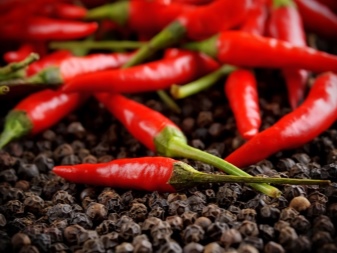
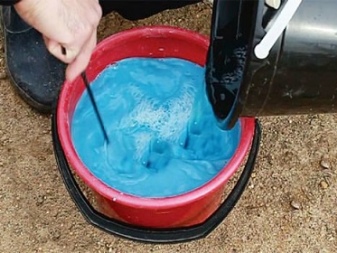
As the thuja develops, it is possible to observe a change in its color and the dropping of needles, which is a natural process, however, it is important not to confuse these phenomena with signs of the disease and take timely measures for treatment.
About why the thuja turns black and how to treat it, see the next video.



































































The comment was sent successfully.